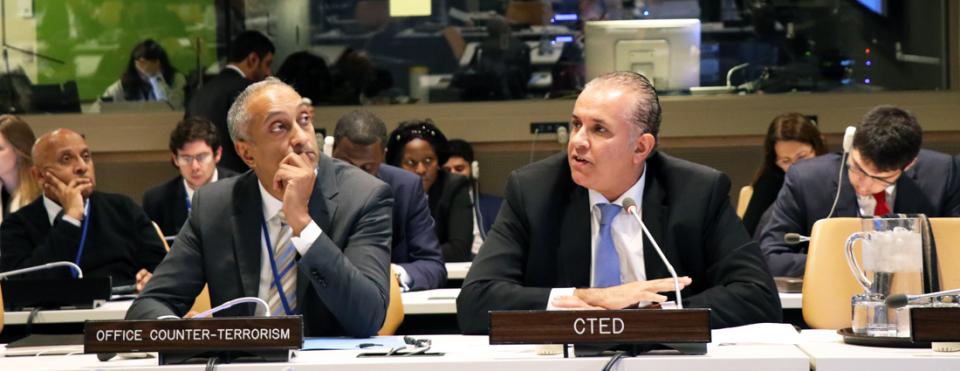
Security Council resolution 1963 (2010) marked a significant shift in the Council’s approach to counter-terrorism. Prior to 2010, the Council and its subsidiary counter-terrorism bodies had focused primarily on security-related, legal, and punitive measures, whereas the new slant reflected the recognition by the Security Council that a more expansive approach might be more effective.
As part of these efforts, on 31 October 2017 the Security Council Counter-Terrorism Committee organized an open informal briefing on “Developing national and regional comprehensive and integrated counter-terrorism strategies (lessons learned).” The briefing featured presentations by CTED, as well as from the United Nations Office of Counter-Terrorism.
In its presentation, CTED outlined three key effects Security Council resolutions 1963 (2010) and 2129 (2013) had on the Committee’s and CTED’s work. First, the adoption of both resolutions led to a more expansive approach to achieving objectives of Security Council resolutions 1373 (2001) and 1624 (2005). Second, they encouraged CTED to pay “attention to factors that lead to terrorist activities,” thereby increasingly aligning the Council’s counter-terrorism measures with those of the United Nations Global Counter-Terrorism Strategy. Lastly, the resolutions enabled CTED to engage with non-governmental stakeholders, including civil society, academia, and the media. Ultimately, this engagement should inform and feed into the development of comprehensive, integrated national and regional counter-terrorism strategies, as well as implementing mechanisms that include attention to factors that lead to terrorist activities.
Through open dialogue, Member States made interventions, shared their current counter-terrorism strategies and offered their observations of good practices. As CTED expressed during the gathering, the briefing demonstrated “the transparency of the Committee’s work in areas of crucial importance to Member States’ counter-terrorism efforts” to a wide audience of Member and Observer States, UN entities, intergovernmental organizations, and specialized agencies.

